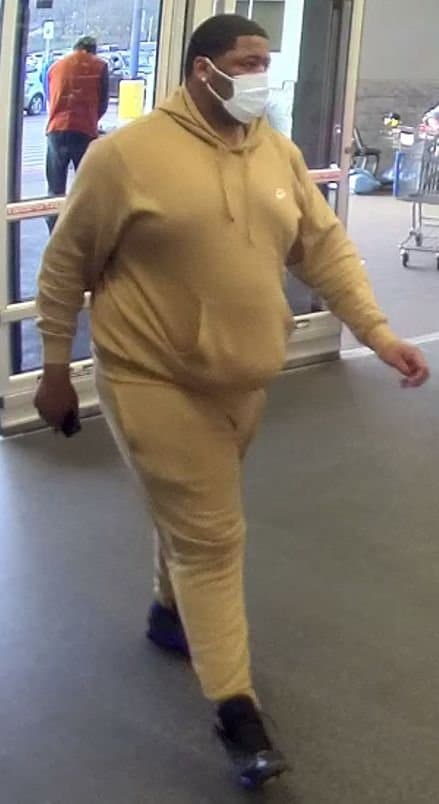
From Central Alabama Crimestoppers
Money Exchange Con
Retail Store
Citywide
Millbrook, Alabama
Case: MBPD22-0200220
Millbrook Police Department
334-285-6832
The Millbrook Police Department is investigating Theft By Deception and seeks the public’s help in identifying the suspects.
The Millbrook Police Department needs assistance in identifying suspects described as two black males and a black female in reference to an ongoing Theft by Deception 3rd degree investigation. The unknown black female engaged in a flim flam scam for the amount of $1,000.00.
The two male subjects are believed to have acted as lookouts and are wanted for Questioning Only. The subjects are believed to have been occupying a Nissan Murano.
If you have any information regarding the identity of these suspects or their whereabouts, please immediately call the Police or CrimeStoppers using our 24-hour tip line at 215-STOP (7867) or 1-833-AL1-STOP or download our P3-tips app. Make sure you receive a Tip ID and Password in order to dialog with Investigators in case there is a follow-up question. Your Tip may lead to a Cash Reward!
If you need to remain anonymous call CrimeStoppers.
Note: A criminal charge is an accusation. The defendant is assumed innocent unless and until proven guilty.
___________________________________________________________________
Quick Change Artist (National Association of Bunco Investigators NABI)
A Bunco crime; a Quick-Change Artist, or sometimes, a Short Change Artist, is someone who steals money by confusing cashiers while they are making change. They do this in many ways. Usually the thief attempts to distract or confuse the cashier during the transaction, does a quick sleight of hand, and then claims they were not given the correct amount. They’re called “artists” because they are extraordinarily good at what they do.
How to Spot Quick-Change Scams

by Kay Tang – Updated June 29, 2018
https://bizfluent.com/how-2124296-spot-quick-change-scams…
The Mechanics of the Scam
An example of a quick-change con typically begins with paying for a small item with a large bill, such as buying a beverage costing $1.20 with a $100 bill. While the cashier is counting the change, the con distracts the cashier by chatting about a random subject. Then, the con changes his mind and asks to pay for the item with a smaller bill. He hands the cashier a $5 bill and asks for the $100 bill back. The cashier forgets that he’s already made change for the $100 and hands the original $100 bill back to the con artist. He then makes change for the $5 bill. The thief pockets the $98.20 in change from the first transaction as well as the $3.80 in change from the second transaction. He has paid for the beverage two times but only used the store’s money.
Common Targets
Quick-change con artists target new or inexperienced salespeople who are trying to deliver fast customer service. They also target young employees who may not be as aggressive in managing the confusion of multiple transactions and are wary of slowing down a line of customers. The types of establishments typically victimized by fast-cash scams can include fast-food joints, gas stations, hotels and even ice cream stores.
Recognizing the Con Job
Employers can train salespeople about how to spot a quick-change scam. For example, employees should be wary of customers trying to purchase a low-cost item with a large bill. Employees should request that the customer use a smaller bill for the transaction. If the customer doesn’t have smaller bill, employees can direct them to the nearest bank to break the large bill into smaller denominations. Small businesses can post signs which explicitly state that they only do transactions with bills no larger than $20. Employees should be warned of customers requesting multiple transactions and of duos that may be working together to distract them.
Stopping the Scam
Police advise that cashiers should place large bills on top of the cash register, the till or on the counter in full view. Cashiers shouldn’t put a large bill in the cash register until they’ve completed one transaction. Also, the cashier should count aloud the change that has been made. If the customer starts to barrage them with requests for multiple transactions, they should purposefully slow the transaction process down and manage each transaction separately. If the customer begins to bully or intimidate the cashier and the confusion escalates, the cashier should stop the transaction completely, close the register and call for the manager.







